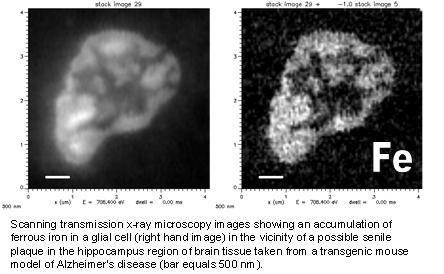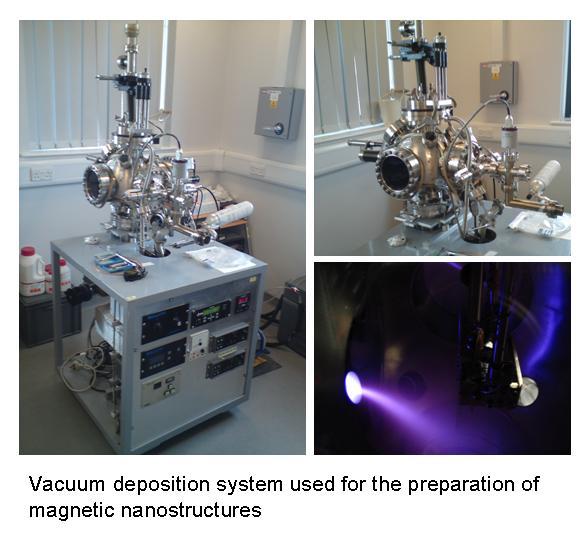Biography
After graduating in Physics at the University of Manchester, Neil moved to Loughborough University to complete a PhD on ‘spintronic’ magnetic multilayered films. Between 1998 and 2002 Neil worked as a post-doctoral Research Fellow at the University of Salford in the Institute for Materials, where he explored a variety of novel magnetic nanostructures. Following this he was awarded an in-house research scientist position at Daresbury Laboratory working with Prof Gerrit van der Laan in the Magnetic Spectroscopy group, applying synchrotron x-ray spectroscopy and scattering techniques to probe magnetic materials. After the closure of the Synchrotron Radiation Source at Daresbury Neil moved to the School of Earth, Atmospheric and Environmental Sciences (SEAES), at the University of Manchester in the spring of 2008, where he now holds an honorary staff position. In October 2009 Neil took up the post of RCUK Academic Fellow in Biomagnetics within the ISTM at Keele University, where he now pursues research in magnetic nanostructures for biomedical applications, and the application of x-ray synchrotron techniques to probe biological materials. In January 2018 Neil was promoted to Professor of Biomedical NanoPhysics.
Research and scholarship
ISTM Research theme: Healthcare technologies
My current research focuses on two main themes:
• the fabrication, functionalisation, reactivity and application of magnetic nanostructures in the biomedical sciences
• investigations of biomineralised nanoscale minerals related to neurodegenerative disorders
A significant part of my research activities involves using synchrotron x-ray techniques to explore biomineralised iron deposits in biological tissue as well as in materials obtained in-vitro. In particular I have recently performed some of the first experiments to utilise soft x-ray spectromicroscopy to obtain iron speciation maps of tissue related to Alzheimer’s disease.

Over a period of many years I have established a track record in obtaining funding for synchrotron work and now regularly perform experiments at the Advanced Light Source, Berkeley Laboratory, USA, the Canadian Light Source, and the Diamond Light Source (UK).
Some of my external collaborators on current/recent projects are listed below:
Joanna Collingwood (University of Warwick)
Gerrit van der Laan (Diamond Light Source)
Jon Lloyd, Richard Pattrick, Vicky Coker (University of Manchester)
Adam Hitchcock (McMaster University, Canada)
Joe Gallagher (Caltech, USA)
Rob Hicken (University of Exeter)
Yves Huttel (ICCM, Madrid, Spain)
Elke Arenholz (Berkeley Laboratory, USA)

Teaching
Postgraduate teaching (School of Pharmacy and Bioengineering): I am the module leader for and teach the following courses on the Biomedical Engineering / Cell and Tissue Engineering MSc: - Nanomagnetics in Nanomedicine (MTE-40030) - Biomedical Signal Processing and Analysis (MTE-40031) In addition I contribute to the following module/s: - Engineering for Medical Applications (MTE-30003) - Project - Medical Technology (MTE-40015) Undergraduate teaching: I teach on the following modules - School of Life Sciences (LSC-30028): Advances in Medicine - School of Life Sciences (LSC-30055): Biomedical Engineering - School of Life Sciences (LSC-30063): Brain Disease
Publications
School address:
School of Pharmacy and Bioengineering
Hornbeam Building
Keele University
Staffordshire
ST5 5BG
Research centre address:
School of Pharmacy and Bioengineering
Guy Hilton Research Centre
Thornburrow Drive
Stoke-on-Trent
ST4 7QB
Undergraduate enquiries:
Email: enquiries@keele.ac.uk
Tel: +44 (0)1782 734010
Postgraduate enquiries:
Please contact the CPD4ALL team:
Email: phab.postgraduate@keele.ac.uk
Keele Centre for Medicines Optimisation (KCMO)
Tel: +44 (0)1782 733831 / 734131
The Virtual Patient project enquiries:
Contact our Digital Development team:
Email: pharmacy.digital@keele.ac.uk


